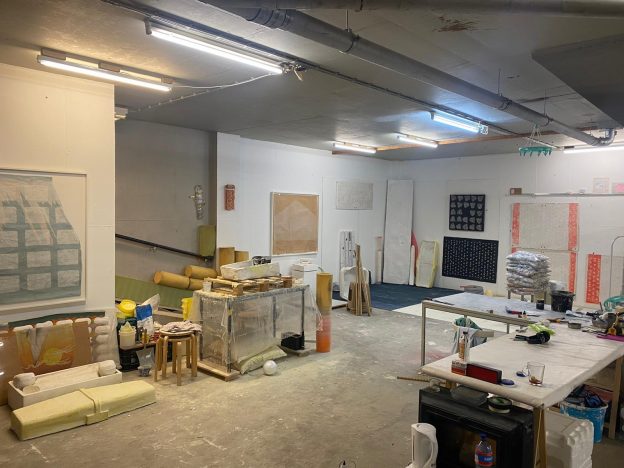ARTIST TALK ALEXANDRA PHILLIPS
Date: Tuesday November 3rd, 7pm
Join Zoom Meeting: https://hogeschoolrotterdam.zoom.us/j/91721863234?pwd=WnMrdHNGZDgxZ2hLQTQ4ZnVmdWdCQT09
Meeting ID: 917 2186 3234Passcode: 778395
This exploration into my work and practice will borrow concepts from the music recording world. Using the notion of the studio as instrument, I will refer to various experimental producers in pop music history (Joe Meek, Daphne Oram) to frame the unique type of knowledge an artist might glean from a focused studio practice. Attempting to understand the continuous practice of making as a tool in itself, we will touch on some ideas discussed in Hammer and Silence by Jyrki Siukonen. Realizing each of us is different in our way of making, I hope to offer some ideas that are not specific to medium or method, but more a discussion of the notion of a practice itself. Of course, there will be some surprises along the way.
Alexandra Phillips (b.1988) is American currently working in Rotterdam. Although she was born in New York State, she spent much of her formative years in North Carolina. Attending an art-centered high school program at University of North Carolina School of the Arts, she went on to complete a BFA in painting and a BA in art history at the Kansas City Art Institute. Her practice explores a range of medium from sculptural forms, to sound, to text and printed matter. Phillips has worked with various institutions in the United States and Europe, receiving a Van Lier Fellowship (2013), Atelier Mondial is supported by the Zaeslin-Bustany-Scholarship in collaboration with Christoph Merian Stiftung, Basel, Switzerland (2016), Jan van Eyck Academie (2017). For the past year her research has been supported by CBK Rotterdam. In 2011 Phillips and artist Jan Henderikse (b.1932) founded Purepropaganda.org Magazine, an absurdist design firm that continues to operate in various forms today.
It is this passion for materials—far more than the interest in what it is—that sets Phillips’ work apart from the narrative and anecdotal. Because Phillips is expressly not a creator of tableaux: “I’m not an image maker, illusion is not my thing.” She does reflect on the people who once felt desire for what now passes through her hands discarded—the wonder, sometimes with a dash of melancholy—but this never resurfaces in the work. Ultimately her art is meant to be concrete, to represent nothing other than what it is. Phillips works with the characteristics of her materials, but does not transform them. These are characteristics that are so often overlooked, precisely because they may contain a certain degree of randomness, as they are unintended characteristics. Hard cardboard becomes soft when it ages, colorfast plastic fades, and rigid polystyrene eventually crumbles. Alexandra Phillips gives precisely that neglected a second chance, she revisits the obsolete. Because everything deserves “a day in court,” as she likes to put it. The cards are reshuffled, it is a “new round, new opportunities,” for the functional and the functionless, for the unnoticed, worn and discarded, for that which has acquired a new meaning, value aesthetic with the passage of time.
– From Antoon Melissen, “A Day in Court” 2016

